Art & Exhibitions
In Pictures: the Musée d’Orsay Presents Kehinde Wiley’s Fallen Figures Alongside the Historic Sculptures That Inspired Them
The display, on view through January 8, is an extension of the artist's ongoing "DOWN" series.
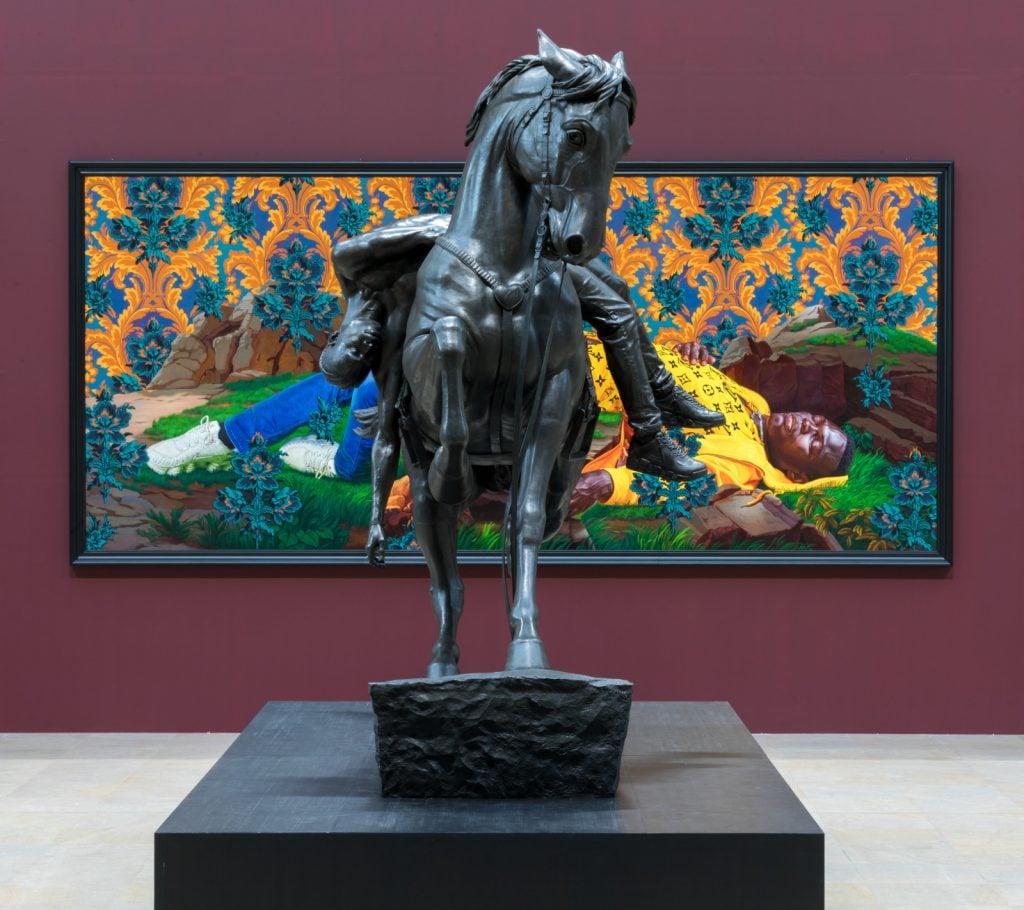
The display, on view through January 8, is an extension of the artist's ongoing "DOWN" series.

Jo Lawson-Tancred

Formerly a train station, the grand central nave of the Musée d’Orsay in Paris has retained its high ceilings and streaming natural light, making it the ideal exhibition space for historic sculptural masterpieces.
Now, the familiar collection of traditional statues has been enlivened by American artist Kehinde Wiley’s twist on the classical European tradition. At the center of the hall, a large-scale canvas of a woman wearing bright street clothing, hangs beside two monumental sculptures.
These new works are an extension of the artist’s ongoing “DOWN” series which, since 2008, has reimagined famous depictions of fallen figures, such as Hans Holbein’s The Body of the Dead Christ in the Tomb (c. 1520), but using contemporary subjects.
Wiley’s painting Women Bitten by a Serpent (Mamadou Gueye) was specifically inspired by the museum’s marble statue Woman Bitten by a Serpent (1847) by the French sculptor Auguste Clésinger. The contemporary version focuses instead on the Senegalese athlete Mamadou Gueye, depicted in a yellow Louis Vuitton top, blue jeans and white sneakers.
Each of Wiley’s subjects are laid down or, in the case of An Archaeology of Silence, draped across the seat of a horse in an inversion of the majesty we have come to expect of traditional equestrian portraiture. These poses might suggest calm repose—or violence and death.
“Whilst playing with the stereotypes of Western painting and sculpture, Kehinde Wiley carries an up-to-date message concerning the violence of contemporary society,” Christophe Leribault, president of the Musée d’Orsay and the Musée de l’Orangerie, said in a statement. “I wanted to display these works as an actual strand of those collections at the Musée d’Orsay that have been such an inspiration to him and of which he offers a fascinating rereading.”
Born in 1977, Wiley is known for his reinvention of art historical tropes and conventions to center contemporary Black subjects and experiences. The exhibition is an extension of his recent show at the Fondazione Giorgio Cini in Venice. See images of the installation below.
The exhibition, including the works on show in Venice, will be traveling to the de Young museum in San Francisco in March 2023.
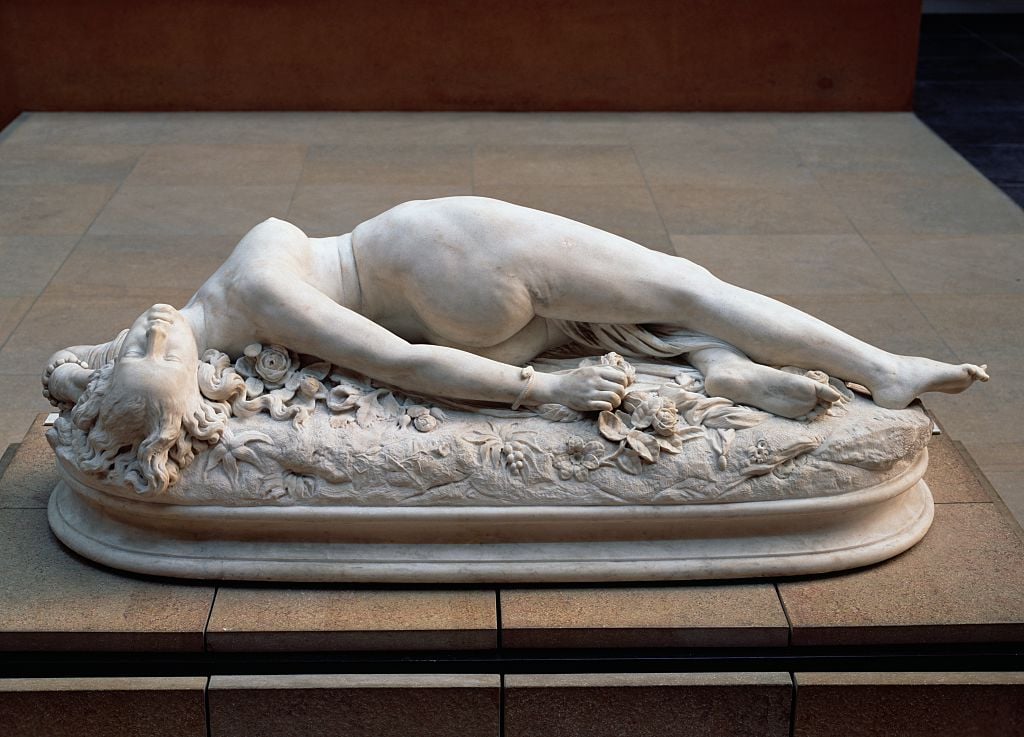
Woman Bitten by a Serpent (1847), by Auguste Clésinger at the Musée D’Orsay. Photo by DeAgostini/Getty Images.
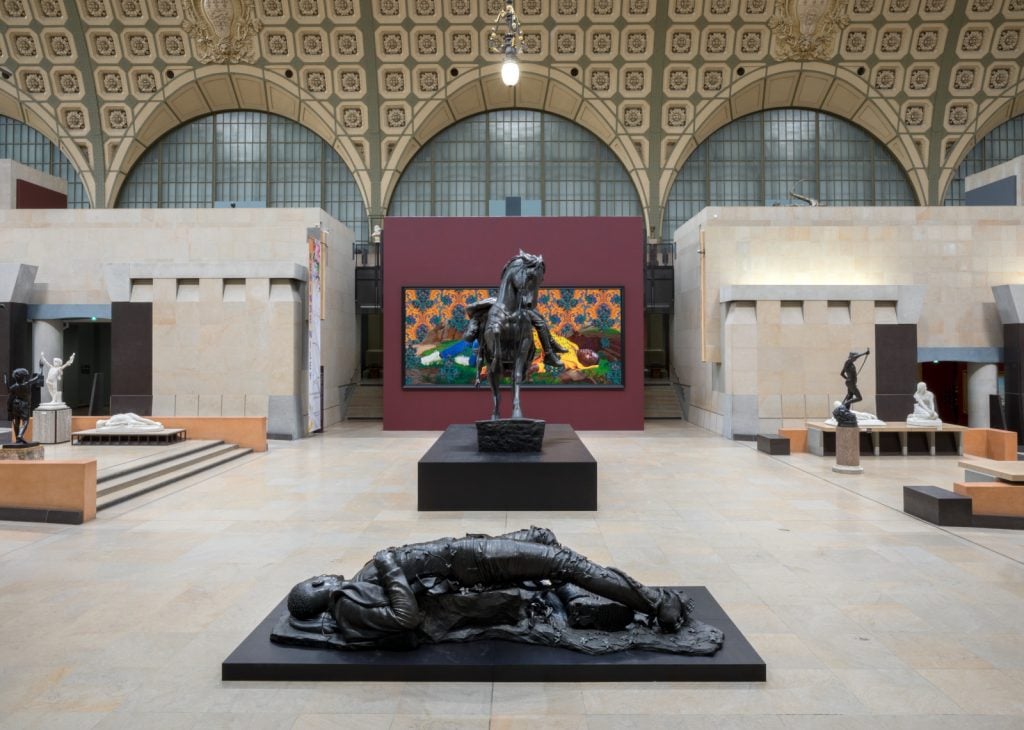
Installation view of “Kehinde Wiley” at the Musée d’Orsay in Paris. Photo: © Musée d’Orsay, Dist. RMN-Grand Palais / Sophie Crépy.
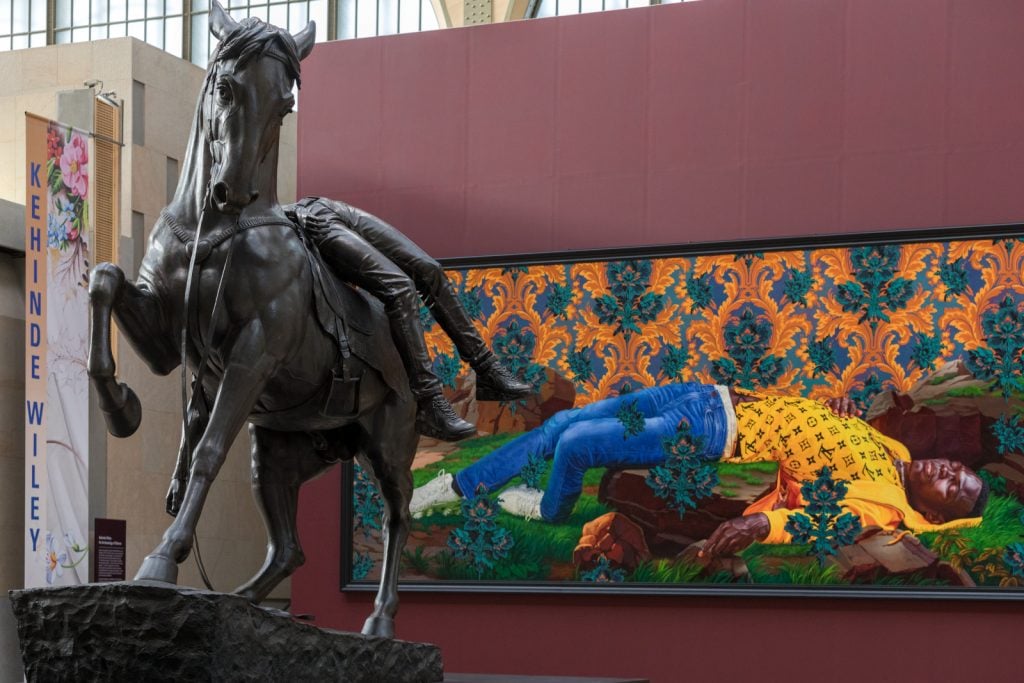
Installation view of “Kehinde Wiley” at the Musée d’Orsay in Paris. Photo: © Musée d’Orsay, Dist. RMN-Grand Palais / Sophie Crépy.

Installation view of “Kehinde Wiley” at the Musée d’Orsay in Paris. Photo: © Musée d’Orsay, Dist. RMN-Grand Palais / Sophie Crépy.
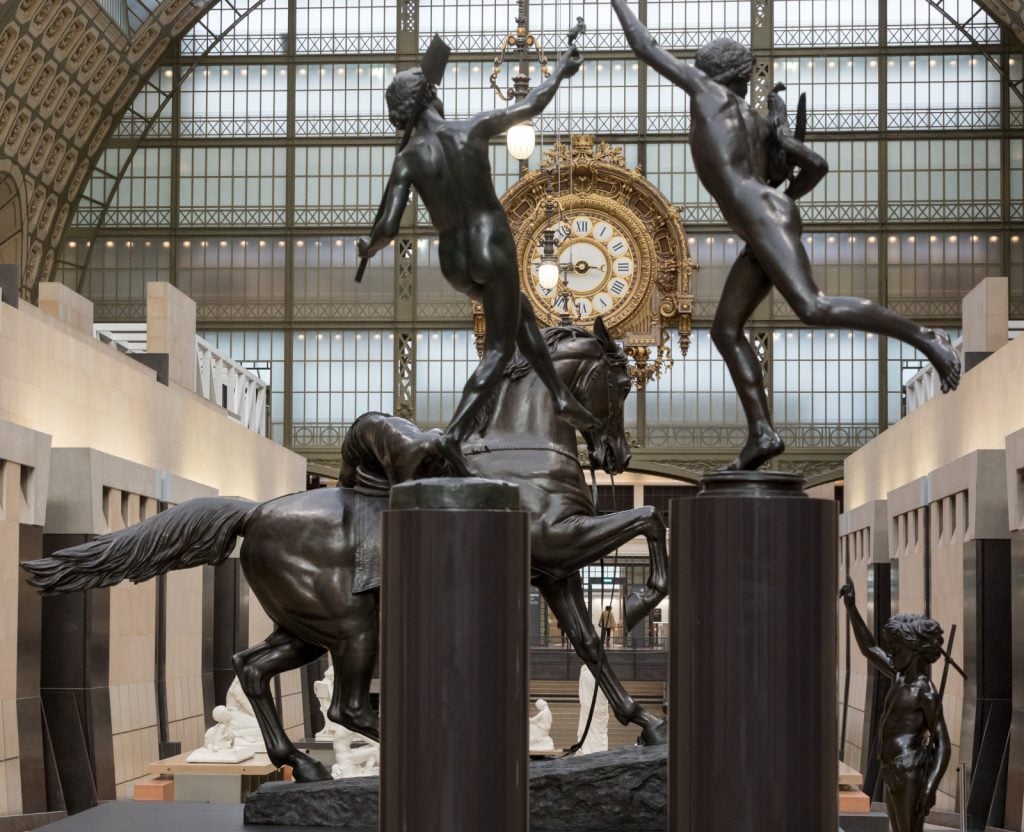
Installation view of “Kehinde Wiley” at the Musée d’Orsay in Paris. Photo: © Musée d’Orsay, Dist. RMN-Grand Palais / Sophie Crépy.
“Kehinde Wiley: An Archaeology of Silence” is on view at the Musée d’Orsay, 1 Rue de la Légion d’Honneur, 75007 Paris, France, September 13, 2022–January 8, 2023.